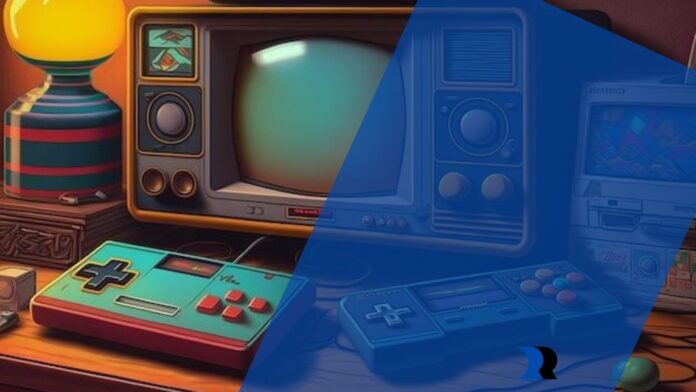Video game consoles had their heyday in the early 1990s. During this time, console games’ visuals and playability reached their zenith with the advent of 16-bit gaming. During this time, many groundbreaking video games, such as Sonic and Super Mario World, were introduced to the public.
When video games entered its fourth generation (16-bit), many players felt they had finally found their sweet spot. The games of the time were works of art that expanded the medium’s potential; they were more than simply a source of amusement. Many of the genres and gameplay elements that are commonplace today originated in the 16-bit period, which also gave rise to some of the most recognisable names in gaming.
This article will examine the 16-bit era of gaming and its remarkable characteristics while also looking back at the golden period of console gaming. Additionally, we will examine how the 16-bit era’s impact on the gaming industry is felt even now.
True Console Gaming
To start, know that the 16-bit era was a moment when video game technology first delivered on the promise of real console gameplay. Due to technology limitations, the visuals and gameplay of games on earlier console generations were simpler. Video game designers now gained the capacity to construct intricate gameplay systems and vivid landscapes with 16-bit devices like the Sega Genesis and the SNES.
A Golden Era of Gaming
Developers could make visually stunning and functionally superior video games than in the past, ushering in a new golden era of console gaming. Regarding 16-bit visuals and playability, Super Mario World is unrivalled. A wide variety of colourful foes and obstacles populate the game’s vivid and intricate landscape. Super Mario World’s precise controls and thoughtful level design ensure that the game remains enjoyable to play even after more than 25 years after its debut.
However, several more games from the 16-bit period are as significant and impactful, and Super Mario is just one of them. Sonic the Hedgehog popularised fast-paced platforming games, while The Legend of Zelda: A Link to the Past exposed console players to enormous open worlds for the first time. While these are just two instances, many more demonstrate how 16-bit gaming broadened our conception of video games.
A Multiplayer Revolution
Today’s internet era is filled with high-end graphics, revolutionary technology such as mobile devices, and a level of popularity within gaming that extends throughout countless industries, such as the most popular casino apps in India. Therefore, an advanced multiplayer option may seem basic, but at the time, it was groundbreaking.
The advent of 16-bit consoles revolutionised visuals and gameplay and multiplayer gaming as we knew it. The greater hardware capabilities of 16-bit consoles made multiplayer modes that could handle up to four players simultaneously possible.

Friends and family could now play together in ways that weren’t conceivable before, whether competitively or cooperatively. Thanks to their innovative single-player features and addicting multiplayer capabilities, games like Street Fighter II and Super Bomberman became instant classics.
The Arrival of 32-Bit & Beyond
Midway through the 1990s, 32-bit systems such as the PlayStation from Sony and the Nintendo 64 from Nintendo (excluding Sega’s disastrous Saturn) ushered in the end of the golden era of console gaming. If 3D graphics later became the norm in video games, many players believed that the new systems’ 3D graphics weren’t necessarily an enhancement over 2D graphics, even if they were more powerful than 16-bit consoles before them. Regardless, 32-bit systems were the last straw for console gaming. After years of improving graphics and expanding gameplay options, developers ultimately hit a wall with 16-bit technology, and console gaming as we knew it came to an end.
16-Bit Lives on Today
The influence of 16-bit console gaming continues to resonate in the present despite the current dominance of 4K graphics and virtual reality technology. Several contemporary video games continue to depend on established gameplay elements that developed during the 16-bit period, such as side-scrolling platforming, top-down action, and 2D combat. Furthermore, some contemporary creators have acknowledged that 16-bit games have significantly influenced their work. Undoubtedly, the absence of 16-bit console gaming would have significantly hindered the development and success of the video game industry as we know it today.
16-Bit Games Cemented in Video Gaming
Sonic The Hedgehog 2
Many people think Sonic the Hedgehog 2 is the finest Sonic game, and it’s easy to understand why. Along with Sonic’s new buddy, Tails, it brought many new skills and gameplay concepts that made the Sonic series even more exciting and enjoyable to play.
Super Mario World
Super Mario World stands the test of time among the greatest 16-bit video games of all time. It was the first in the series to have many of the hallmark elements and gameplay mechanics, and it remains one of the most engaging games in the series to this day.
Streets of Rage 2
Outside of Capcom’s games, Streets of Rage 2 is among the finest beat ’em ups of the 90s. Everyone still thinks the game is great, particularly the music in particular. It wasn’t the Genesis that got Streets of Rage 2 started; the arcade version came later.

Because of this, it was probably a little more balanced, and the game is still fun now, even if it was a top-beat ’em up back then.
Streets of Rage 2 is an essential Genesis game because of its long storyline and intense action. While Capcom certainly produced the finest beat ’em ups of the 90s, Streets of Rage 2 is undeniably a top-five contender on most retro-gamers lists.
The Legend of Zelda: A Link to the Past
Everyone agrees that Link to the Past, The Legend of Zelda, is one of the best video games ever made. It refined the concept set by the original two Zelda games, creating an amazing journey that remains enjoyable to this day.


